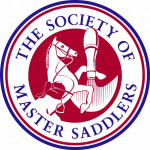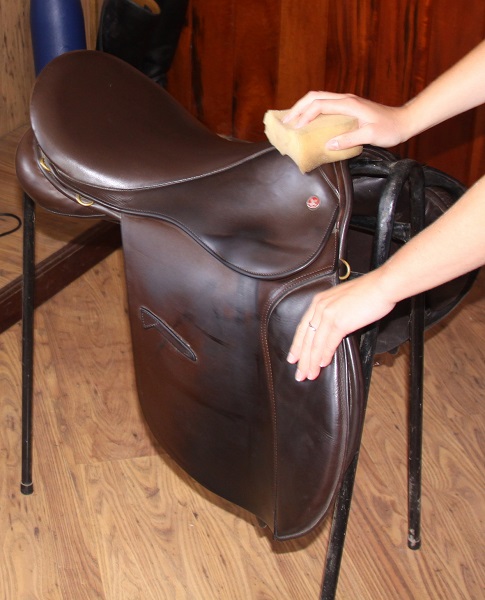Posted: 2nd May 2019 | Back to news feed

Second Hand or New? What are the Options?
So you’ve invested in your exciting new horse but the owner wants to keep its saddle – what are the options to consider?
Without doubt the most important aspect is that whether you have the budget for a new saddle or only for a second hand one – the fit for the horse is key and must always be the first consideration.

Whether buying a new or second hand saddle it is important to have it fitted by a Society of Master Saddlers’ Qualified Saddle Fitter and have it checked regularly.
A new saddle versus a second hand one depends on the finance available and a correctly fitted second-hand saddle is far better than an ill-fitting new one!
It is important to plan ahead and provide the 'right' facilities for your saddlers visit as this helps the saddle fitter to give the best possible service. Ideally you should fulfil the following criteria:
A flat, hard surface where the horse can be stood up and run up in hand.
An area where the horse can be ridden. Saddle fitting can take a considerable time and the saddle fitter is likely to want the horse owner to ride in a number of short-listed saddles, an essentially important part of the fitting procedure.
Showjumping and Cross-Country. If you are opting for a saddle designed specifically for dressage, polo or showing it is very unlikely you will be wanting to use the saddle for jumping! If you are considering purchasing a saddle that will involve jumping, it is essential to ride over a few fences.
Rider Presence. Although this will appear remarkably obvious to the vast majority of riders, it is a fact that some believe their presence isn't a necessary factor. Occasionally horses are 'shared' or ridden regularly by more than one person and, in this case, both riders should be present.
Wear something suitable. Sometimes clients are unsuitably dressed. Jeans and trainers are always inadequate and they certainly aren't the most comfortable clothes in which to try out short-listed saddles.
The Society of Master Saddlers generally cautions that the well-fitting saddle does not require the addition of anything under it with the possible exception of a thin saddle cloth. There are, however, exceptions to every rule. When there is a valid reason for using a numnah or gel pad the saddle fitter will need to allow for the addition.
Have your own stirrup leathers and girth available. The saddle fitter will be carrying girths of various types and sizes but it is a good idea to have your own available. Using your own stirrup leathers is generally more comfortable and avoids the possibility of the saddle fitter's new leathers becoming marked and therefore difficult to sell.
The saddle fitter would obviously prefer to preserve the condition of his new saddles but, in addition, the marks left on the well-groomed horse's back after removal of the saddle are significant because they indicate bearing surfaces and further identify unwanted movement. When the horse is ill-groomed, the marks left by the saddle may be blurred or indistinguishable.
As the most influential professional body in the world connected with saddlery, the Society of Master Saddlers has put enormous effort into improving saddle fitting standards including instituting what remains the only non-commercially linked saddle fitting qualification in the world.
To find out more information on The Society of Master Saddlers and to find your nearest Registered Qualified Saddle Fitter visit www.mastersaddlers.co.uk or contact on 01449 711642.
The Equestrian Index newsfeed is compiled from articles submitted by advertising members and expresses the opinions of those members. Watsons Directories Ltd shall not be held liable for any inaccuracies or mis-statements therein.
